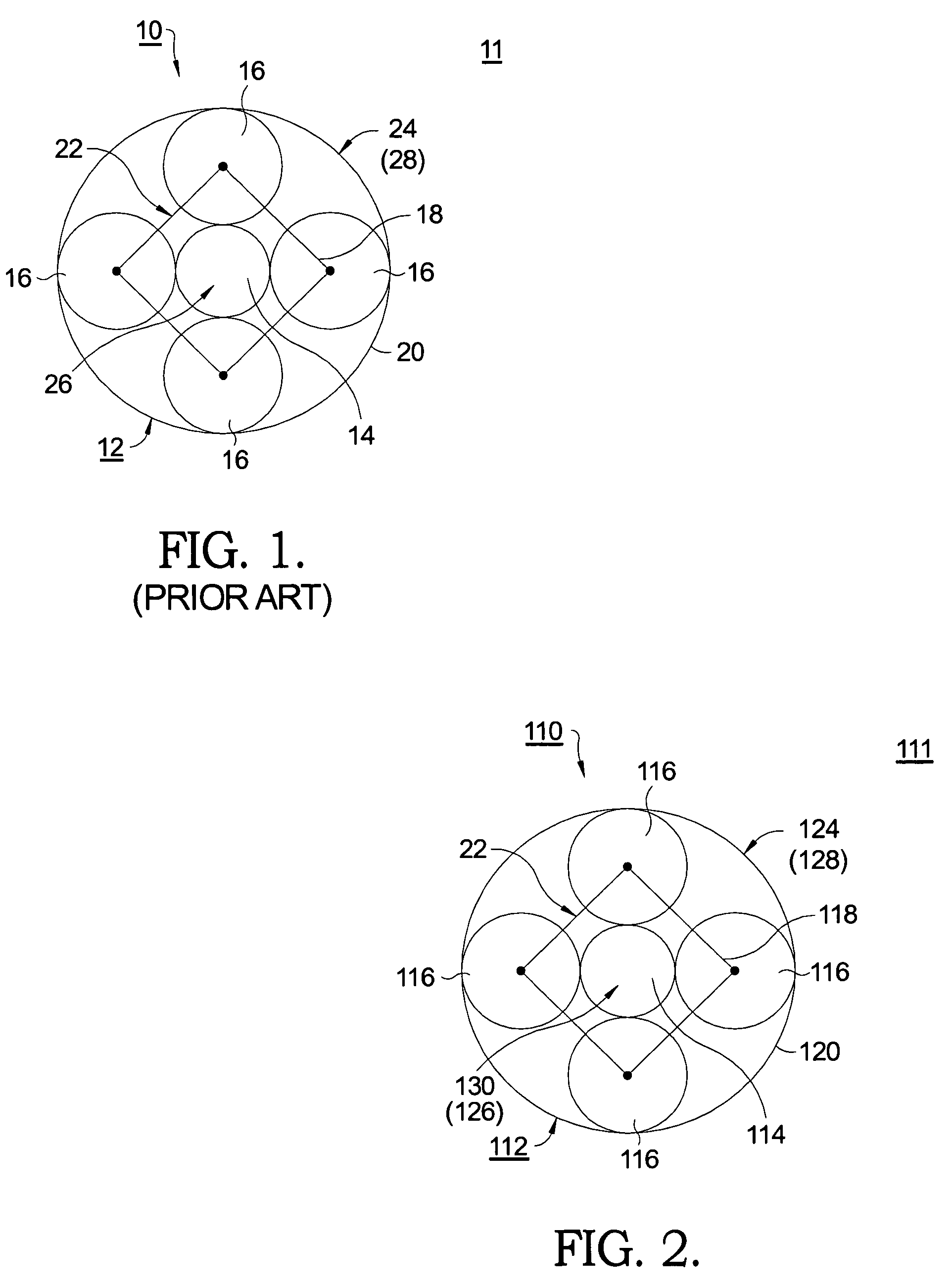Supercharged hybrid input differential engine system
a hybrid and input differential technology, applied in the direction of hybrid vehicles, machines/engines, vehicle sub-unit features, etc., can solve the problems of low turbocharger efficiency, no inherent ability of such engine configurations to use regenerative braking, and high cost of prior art drivetrains. achieve the effect of increasing engine torque, high torque, and increasing pressure ratio
- Summary
- Abstract
- Description
- Claims
- Application Information
AI Technical Summary
Benefits of technology
Problems solved by technology
Method used
Image
Examples
Embodiment Construction
[0020]The invention employs a planetary power split device and mounts a supercharger on one of the members of the planetary gear set. In principle, an ICE, a supercharger plus first optional motor / generator, and an output shaft plus second optional motor / generator may be connected respectively in any arrangement to the sun gear, planet gear carrier, and ring gear of a planetary gear set. In one aspect of the invention, as described below, the arrangement includes a twin-screw Lysholm® type supercharger on the “sun” gear of the planetary system, an ICE on the planet gear carrier, and an output shaft on the ring gear. The twin-screw supercharger can inherently be used as an expander wherein it is turned in reverse to a normal direction and with valves or porting used to reverse the flow direction of gas through the rotors. Other supercharger types, such as Roots® type or “Centrifugal” superchargers may use the optional clutch since they are efficient only when turning in one direction...
PUM
 Login to View More
Login to View More Abstract
Description
Claims
Application Information
 Login to View More
Login to View More - R&D
- Intellectual Property
- Life Sciences
- Materials
- Tech Scout
- Unparalleled Data Quality
- Higher Quality Content
- 60% Fewer Hallucinations
Browse by: Latest US Patents, China's latest patents, Technical Efficacy Thesaurus, Application Domain, Technology Topic, Popular Technical Reports.
© 2025 PatSnap. All rights reserved.Legal|Privacy policy|Modern Slavery Act Transparency Statement|Sitemap|About US| Contact US: help@patsnap.com



